Purvi Padia: Founder of REVELRY
Episode 650
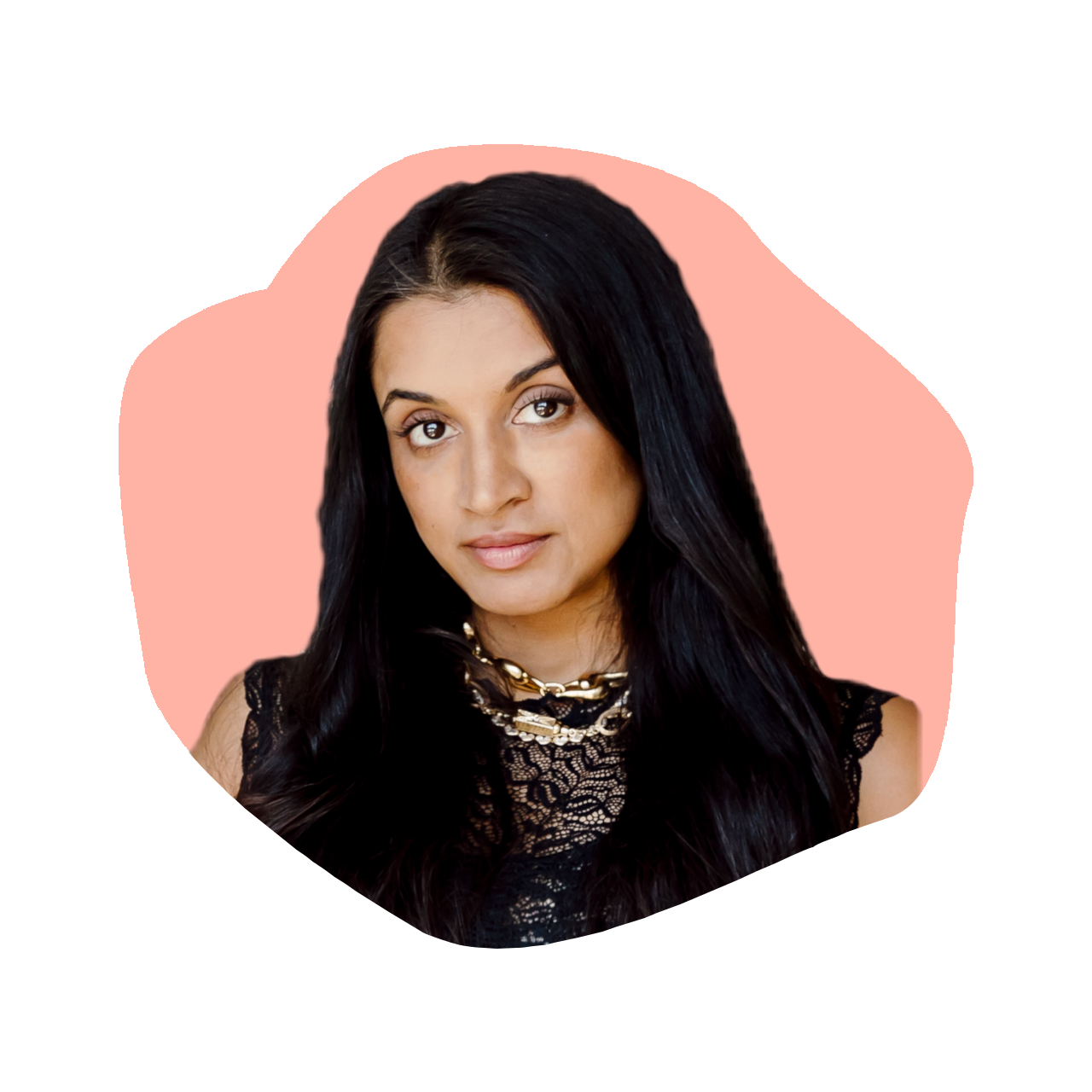
In this episode of The Kara Goldin Show, I sit down with Purvi Padia, Founder and Creative Director of REVELRY by Purvi Padia and Purvi Padia Interiors. Purvi is a celebrated interior designer known for blending modern and classic elements to create timeless luxury. Her work has been extensively featured in leading publications like Vogue, Elle Décor, and House Beautiful, as well as on TV shows such as Million Dollar Listing and Open House NY.
Purvi shares her journey of launching REVELRY, a stunning tabletop collection designed to transform every dining moment into an unforgettable experience. From high-quality craftsmanship to versatile designs, REVELRY embodies casual elegance and modern luxury. We dive into how her interior design background influenced the collection, her hosting tips for elevating gatherings, and her perspective on sustainability in design.
Beyond her work in design, Purvi is also the founder of PROJECT LION in partnership with UNICEF USA, an initiative that serves millions of vulnerable children in India. She opens up about balancing her entrepreneurial ventures with her philanthropic efforts and how she stays inspired to innovate.
Whether you’re a design enthusiast, an aspiring entrepreneur, or simply looking for inspiration, this episode is packed with insights and ideas. Tune in to hear Purvi’s incredible story and discover how REVELRY is redefining dining traditions. Now on The Kara Goldin Show!
Resources from
this episode:
Enjoying this episode of #TheKaraGoldinShow? Let Kara know by clicking on the links below and sending her a quick shout-out on social!
Follow Kara on LinkedIn – Instagram – X – Facebook – TikTok – YouTube – Threads
Have a question for Kara about one of our episodes? Reach out to Kara directly at [email protected]
To learn more about Purvi Padia and REVELRY:
https://www.revelryhome.com/
https://www.instagram.com/revelryhome/
https://www.instagram.com/purvipadiainteriors/
https://www.revelryhome.com/
Transcript
Kara Goldin 0:00
I am unwilling to give up that I will start over from scratch as many times as it takes to get where I want to be. I want to be you. Just want to make sure you will get knocked down. But just make sure you don’t get knocked out, knocked out. So your only choice should be go focus on what you can control. Control. Hi everyone, and welcome to the Kara Goldin show. Join me each week for inspiring conversations with some of the world’s greatest leaders. We’ll talk with founders, entrepreneurs, CEOs and really, some of the most interesting people of our time. Can’t wait to get started. Let’s go. Let’s go. Hi everyone, and welcome back to the Kara Goldin show. I’m so excited to have my next guest here with us today. Purvi Padia is the founder of REVELRY and also the founder of an incredible, incredible nonprofit called Project Lion, that we’ll get into too many may know her incredible design. She’s been featured in many, many publications, but Purvi Padia interiors has really redefined what it means to create timeless luxury, and she went ahead and created a lot of incredible products that you can use in your home crafting spaces that inspire and elevate every single moment. So as I was telling her, in addition to me being obsessed with her and everything she’s doing and her products, I introduced my husband to some of her glassware, and he loves the look and the feel. So if you’re looking for a great gift, I don’t think I’ve ever heard of them actually talk about glassware in the same way it sort of had me, had me chuckling a bit. But beyond her stunning designs, pervy is also a passionate philanthropist and the founder of Project Lion, I cannot wait to get into more of that, and it’s an initiative with the with UNICEF USA that supports millions of vulnerable children in India. So without further ado, welcome. How are you?
Purvi Padia 2:15
I’m so great. Thank you so much for having me. I’m so excited to be here,
Kara Goldin 2:19
absolutely. Well, I love the story, and I love all of the passion and purpose and commitment that I felt like you really in your heart have to making change in the world, starting with consumers and helping them have the best home environment that they could possibly have. But now you’ve created products, and then, of course, your nonprofit. But let’s start with REVELRY. And how does it reflect your philosophy as a designer?
Purvi Padia 2:51
Yeah, I think REVELRY is, I always say it’s like the love child of so many of my different passions, you know. And the thing that I think that is the most reflective of REVELRY and and the way that I kind of live is that I really like, I think, like, the most important thing in living and in entertaining and in hostessing and all of that is getting the right balance. And for me, it’s like balancing that idea of being really polished and put together, but also being undone enough and kind of messy enough that people are not afraid to have a good time, you know. And I think that’s really very much kind of how I approached interiors, and also how I approached REVELRY. I didn’t want the idea of decor. I never have wanted the idea of decor to be kind of daunting, or everything happened to be so precious and museum like that, you can’t really live life, you know. For me, all of this like, the point of all of it, right is to enjoy and to live an authentic life. And if everything is like, so dumb and so buttoned up and so polished, it doesn’t really leave a lot of room for, like, the creative energy and the fun and the laughter, the spilled wine glass. And so that was really kind of the inspiration behind Ravelry.
Kara Goldin 3:56
I feel like, when I look at some of your design projects, which are so incredible that you’ve worked on, and many of those, as I mentioned, have been highlighted in incredible publications throughout the world, but your experience in interior design obviously influenced your approach to building I guess first the tabletop collection. Is that correct? Yeah. So how did you think about that? Were you feeling like, Okay, I’m I’m done with with this home, I guess, in one example. But maybe people wanted to know, what else do I do? What do I put in the cupboards? I mean, to kind of go along with everything great that you’ve done for me.
Purvi Padia 4:39
Yeah. I mean, I think that that was actually one of the catalysts for this entire thing. As an interior designer, you’re oftentimes tasked with decor and really outfitting a home top to bottom. And like I just said, you know, my philosophy for interiors, I really wanted every element of the design to kind of play into that. And when I went out to find tabletop or kitchen. In I find the kind of, like two things. I found that there was really high end available. So you could go design, or you could go or mezz Dior, kind of that kind of beautiful tabletop, which is obviously stunning, but then doesn’t leave a lot of room for play just because of the investment level. And then if you could go to more of a, again, a super useful, really well curated collection, like a crane barrel, for example, right? But that it doesn’t feel so it doesn’t feel really, kind of, it doesn’t feel personal, right? It feels like there’s a lot of people who have it, and it’s, it’s produced to be really liked by by a lot of people, obviously, right? So that’s kind of the the intention. So I had a really hard time finding a brand that I felt was a mid level brand, so price point accessible, that had a real breadth and curation. You know, I found that I would find glassware in one place and napkins in one place and tablecloths in one place, right? But there wasn’t one middle level brand that really felt like it had a really strong kind of across the board curation, and still felt really design informed. And so that was really kind of the inspiration for for how I approached REVELRY. I really wanted to create a brand that felt super elevated, that felt really intentional in design, right? It’s really informed by interior design principles, by architecture principles, yet still really accessible with a really, really broad curation. And so I really wanted it to be a one stop shop that felt, that felt special, still, rather than kind of mass produced. So
Kara Goldin 6:35
your products are so unique, and obviously you’ve started in tabletop, you also have incredible things beyond plates and and the napkins and and everything. You have candles as well. I would imagine this is just a first stop for creating your product line. What was the most difficult part you’ve been in the services business and sourcing business, but now you’re creating a product line that you have a vision for what was the most difficult part of that? Yeah,
Purvi Padia 7:13
it’s so funny that you say that, right? Because when I kind of set off, and I know everyone says it so it’s, you know, everyone says, like, had I known what I didn’t know, I wouldn’t have done it, right? And I really feel like that about this. To me, it was like, Oh, this is a creative endeavor like that is really kind of what I do and what I love to do. And I felt like, Oh, this is going to be super, super seamless for me, right? And the creative process was amazing, and it was exactly what I was hoping it would be, but from a business standpoint and the way that a consumer product, good business is run, versus a service. Business is run. I mean, it is, it is like just night and day, right? So that level, like that learning curve, was far and away the most challenging thing, you know, working with production, working with sourcing, working with storage, working with shipping, working with back end, e commerce, like all of these things that, you know, while I ran this really kind of high paced interior design firm for 15 plus years, it was I kind of stepped into this and was like, I don’t feel like I’ve ever run a business before, like, this is like a completely different animal. So I would say that the creative part of it was really natural and super, I don’t want to say easy, you know, because it’s always challenging to make things that are exciting, design wise, but also functional and also really kind of resonating with with a wider audience. So but still, the creative part of it was the part that, for me, felt, felt seamless. But the rest of it, you know, the real business part of it was, was the most challenging thing, and continues to be the most challenging part. Yeah, definitely
Kara Goldin 8:50
it’s, you know, the things that you don’t know, I would imagine, things like glass and breakage, and now you’re shipping things versus versus actually having somebody else ship them and all all these things, having the right box. It’s
Purvi Padia 9:07
crazy, the things, you know, and I mean, a lot of the stuff is made overseas, right? It’s very much we have glass and dishes made kind of all over the world. And it’s just getting like you’re saying, the boxes that they’re going to get across the sea and not break and then get to the consumers without breaking I mean, it’s just so many things that you don’t think about when you’re thinking like, oh, I would love to start in, you know, a decor collection, you know. So it’s just that part of it has been an incredible, incredible learning experience.
Kara Goldin 9:32
I remember when we were first coming out with the product, I developed hint, and we were getting it into Amazon, and we had a carbonated product that was in glass bottles, and Amazon asked us to be the first glass product to in the food and beverage to to ship to consumers. And we had to deal with a guy whose project. Project was basically to jump on these boxes, and they nicknamed him the gorilla. And I’m like, There’s a guy named the gorilla, and he’s a quality control and so he kept saying, No, the box needs to be a little thicker. No, it needs to be a little thicker, because in case. And I was like, I just want to create a water that tastes better. I mean, this is, this is crazy,
Purvi Padia 10:23
right? I did not sign up for this part of it. I have no idea.
Kara Goldin 10:26
Yeah. So anyway, it was so funny. So what do you think makes a dining experience truly special for somebody who is, you know, creating a table, and I have to say your photography on the site is incredible. I was like, it’s it’s beautiful, and you make it so simple with many of the products that you have. But what do you think really makes a dinner table? If you had to say, it’s like that one thing,
Purvi Padia 10:57
yeah. I mean, again, I always walk to that balance of polished and unpolished. But I think the reason for that is because I think about what the point of the dinner table is like. What is the point of gathering all these people, whether it’s your family or your friends, you’re seated around this table to connect with people, to have conversations, to kind of, for me, at least some of the happiest moments of my life have been around the dinner table, whether it’s with my family or with my friends. And so what I want to create. The goal is that you’re creating a space where people are comfortable enough to linger and have those conversations and laugh and to be themselves, right? And so to me, kind of the secret sauce, or the magic ingredient, is so that it is you want people to feel like they’re at something special, right? So you want it to feel polished, and you want people to feel happy to be there and like they want to stay, but at the same time, you don’t want them to feel like it’s something where they need to always be on their like best behavior, right? You want to give them a chance to say like, this is a beautiful space, but it’s also a space that has room for fun and and so that has really been kind of what I’ve always felt again for tabletop and for interiors. You know, people are always like, your spaces are so beautiful, like you have young kids. Do you let your kids go to those rooms? I’m like, of course, I let my kids go into the rooms like they’re allowed to sit almost so fun, have friends over and all the things, right? So I think, to me, that’s really the the one kind of fact to say, the one thing it’s like to really get that balance right, right? The balance between beauty and functionality, the balance between Polish and unpolish is really kind of what I think really makes for the perfect table and for the perfect home. How
Kara Goldin 12:30
has your Indian heritage influenced your design esthetic and the creation of really everything that you do?
Purvi Padia 12:40
I get most of my inspiration from travel. I would say, you know, not only Indian but but otherwise, traveling is something that I have. Of all the gifts my parents gave me, I always say to them, you know, from a very young age, I got to see the world. And I think that, you know, that not only is informed my passion for Project Lion, but also for design. You know, it’s really about borrowing so many elements from so many different cultures and from India specifically, I think that the textiles are so so gorgeous in India, you know. And I think people automatically, when they think of India, they think of like, really bright colors and lots of gold. And those are things that are obviously, you know, beautiful and really inherent to the Indian culture. But textile is actually something that has been for generations a really important part of Indian trade and part of Indian culture. And I think for me, the reason why I am so drawn to so many layers, you know, whether it’s on a table or in a home or whatever, is because of that that comes from my Indian roots, I think from being exposed to so much, so many different fabrics. You know, even in you think about Indian fashion for women and all of the Indian fashionists, like a sorry, which is like the traditional car is, like, really one piece of fabric, right? And it’s about how you’ve folded it and how you’ve draped it and and how you’ve put it together to really create all this different all this different kind of all these different kinds of looks. And so for me, I would say textile is the one thing that has always been super important in all of my design.
Kara Goldin 14:12
I love that you use the word layers, because that’s, I think that’s a great description for how you create these beautiful designs. And I encourage everyone to go to your website, like I said, to see some of the photos of, you know, the products, because they’re just really, really beautiful. If somebody wanted to try one of the really see some of the products, obviously they should buy the entire website, if they had, if they had one thing that maybe you think everybody needs and everybody should have at a table just to try and create, what would you say? I think it’s
Purvi Padia 14:52
interesting that you brought up glassware, because I would probably say that’s what I is the one thing I think glassware is. Is so quickly elevates the tabletop, right? And not only in a, in a in the sense of making it look nicer, but it elevates it literally, you know, it elevates your tabletop like it gives you up, it gives your table top silhouette, it gives a depth, it gives a proportion, and it almost acts like jewelry, like an accent piece to whatever you have. And so especially hard glassware is so it has so much kind of silhouette to it, right? It’s really, again, it’s really based in architecture. And so I really love the idea of, you have a simple plate, you have a simple napkin, you throw two of these glasses around the table. Now you’ve got, you know, eight glasses, or 16 glasses, or how many ever, and all of a sudden you have this beautiful, right light, reflective quality at your table, if you light a candle, or if, if you’re pouring wine, right the way that it’s going to feel is going to feel so much more special just from that kind of added element. So I think that’s what I would say, for an instant transformation. The one other thing I would add again, and I go back to textile, I think adding, you know, people don’t necessarily think of a table as a place where there’s a lot of textile, but I think that adds such warmth. So if you could either go the glassware kind of route or the textile route, and like, we have this beautiful rumpled table runner and and again, like a rumpled, rumpled textiles are kind of what I usually lean to to achieve that unpolished, that part of kind of the fun, the fun part of the table, right? So we have this beautiful runner, and I think if you kind of throw that down the table, and it’s a very neutral tone, instantly, again, it gives your gives you some depth, it gives you a little bit of layering, and elevates your space. And so I think those are kind of the two directions that I think are the most bang for your buck are like kind of instant, instant transformation.
Kara Goldin 16:48
Yeah, definitely. So tell us about Project Lion and how it’s making an impact, and what inspired you to start the initiative. Yeah. So
Purvi Padia 16:59
Project Lion is something, you know, I could talk about it for for hours and hours and hours, but it’s something that’s really been in the making since, since I was a child. And so, like we just talked about, I traveled to India so much as a child, and had such a heart. I mean, I was born and raised in the States, but I spent so much time there, and I had such a difficult time from a very young age, kind of reconciling these, these Indian children that I would see, and then coming home and like, continuing on with my, like, upper middle class life and in the Midwest and and I always in the back of my mind was like, when I can do something to help these kids, I’m going to it was just something that was, like, always a part of me, actually, don’t ever remember a time that that wasn’t kind of a very salient thought in my head. And when I moved to New York after college, I got involved with UNICEF, and I started, you know, I was on the board, and I started asking that question, like, what are we doing in India? What are we doing in India, you know? And, and they were really like, well, privy, what do you want to do in India? You keep asking us what we’re doing, because there’s something you have in mind. And I’m like, you know, I don’t know, because there’s so much need, you know what? One out of four of the world’s children are in Indian so it’s the problem seemed so kind of just had such a large scale, such a large magnitude, that I was like, I don’t know the answers of how to help but, but I want to, you know. And about eight years ago, I don’t know if you ever seen that movie lion with Nicole Kidman, but I was there, and I watched it, actually, at a pre screening that I had gone to through UNICEF. And I walked out of that theater and I was like, Oh my gosh, this is it. This is where I want to start. And so I approached my contacts at UNICEF and said, What about children without families? How many of those are there in India where? How can we start there? And that’s how it kind of started back in 2017 I think, now and and we started out with kind of a very conservative goal, to reach 200,000 children over the course of three years who were living without families. And how are we going to make sure that they weren’t getting lost in the system? And how are we going to make sure that the institutions that they were in were actually government regulated and not dangerous places? How are we going to make sure that they were receiving their basic human rights, like education and nutrition and health care and all of those things? And honestly, Kara just kind of like took on a life of its own, and after phase one, which ended in 2021 um, 2020 21 the Indian government had said to us, like this has been such a resounding success, we’ve never had a prod, never had a program do so well and be so bought into by the Indian government. The Indian government has to buy in in order for UNICEF to work with any kind of country. And so they said, How do you feel about expanding? And so in 2021 project, Lion turned into the Lion Fund. And now not only is it helping children without families, but it is basically encompassing all of child protection in India. So all of the most vulnerable children. Children are vulnerable. To child marriage, child labor, cyber bullying, all of these things that are really detrimental to society. And and lion is now kind of the leading force there. And by the end of 25 we will have served 20 million children. So it has grown so quickly, it’s been kind of surreal. And and it is, you know, you said, you know, kind of, like, Where does the passion come from? Where does that line like, that is really like, I love design, and I love the work that I do for design. And so much of my design work is related to Lion, and I oftentimes have percentages of my proceeds going to Lion. I mean, it really is that is really my life’s work is this project
Kara Goldin 20:42
line. I love it. And I think so often people, they think philanthropy is an either or or. It’s like a side project. And I love how you brought it into your life, right, like, and even you discussing how, where it started from. I mean, it really is. You can just tell that it’s something that sits inside of you, and you wanted to solve the puzzle, right? And certainly I wanted to do something, yeah, no, and I absolutely love that. So as someone who wears multiple hats within I mean, is this right? You have, you almost have three different companies, or, I don’t know if you call them companies, but initiatives. And what advice would you give? Or how have you staffed these different groups? And you know more than anything you know. How do you divide it up so that they’re all important, right? They’re all really, really critical. But how do you view that as an entrepreneur?
Purvi Padia 21:43
Yeah, I mean to me, I think it’s just about having a sense of flexibility and knowing in any given moment which which initiative really, or which project needs the lion’s share of my attention. You know, I do find that at any given time, it’s not like a 3333 33 right? It’s, it’s, it’s kind of whatever. For example, when lion first was getting off the ground, it was incredibly time consuming. And the time difference of working with the Indian government and all of that was, it was a thing, you know, was a real kind of adjustment, and that, for a long time was the lion’s share of what I did. And then before that, you know, I really launched Pruvit interiors, which was very full time for me and and now the focus has kind of turned to REVELRY a little bit more. I think that it as these things, like, like my interior business, for example, has been, has been happening now for 1516, years. I have an amazing team of people who, honestly, like I, do all of the creative but beyond that, they can really run the show and and same with Lion at this point. I mean, Lion is I founded lion, but it’s UNICEF really runs that program. And they we use all of their resources on the ground. And so it is a super heavy lift for the NGOs and for the people on the ground. And I am very much kind of an advisor, and at this point, you know, kind of a figurehead, but at the end of the day, the program and the state governments are so bought into it that it’s, every time we make a programming change, I’m super involved, but day to day, it really runs, and that’s amazing for me. And then REVELRY is, you know, it’s my baby at the moment, you know, it just launched, not even that. It’s not even six months old. So it’s really, really new. And and it feels like a baby, it feels like it needs a lot of time, yeah. So, you know, at the moment, that’s where my time goes, you know. So I would say, like, currently, my split is probably 70% REVELRY, 20% interiors and 10% line, you know. But at any on any given day or any, any given week that can, that can change, you know. So it really kind of depends, you know, it’s just about having that mindset of flexibility and knowing that it’s not always going to be all things to all of the different kind of arms of what’s important to me, but they’re still equally, you know, kind of living in my world. I
Kara Goldin 24:07
love that you mentioned that you started these companies, and then you’ve got other people running the initiatives. Now it was, it was interesting. I had an opportunity to meet Richard Branson a few years ago, and I was surprised actually to hear that he’s only actually run one company, kick starts a bunch of companies, and has a lot of initiatives going and incredible initiatives, and he acts almost as the interim head until he finds that right person to run it. So I thought it was fascinating to hear him talk about that. And actually, in my case, the only company he’s ever run is virgin cola. And he said, and it was a disaster. He was like, that was it? I was like, not going to do it anymore. And then he sounds Yeah, but he could. Continues to create slide, yeah, but he continues to create things anyway. I just thought, I thought it was so, so interesting. So you look back on on your life and everything you’re doing, I, I, you know if Ben, I’m a little older than you, and now my kids are starting to get off into their their own careers, and I think that the impact that you have on the things that you do every day, I don’t think anyone ever told me that you know what I do for work and philanthropy and things like they’re watching right? They’re watching what you’re doing and and the good in the world. Hopefully that that you’re doing. What legacy do you hope to leave, not only for your family, but also for other entrepreneurs, other women, other people of Indian heritage, whoever you hope to inspire in the world. What
Purvi Padia 25:53
do you hope? Yeah, you know, I think for me, the biggest thing is, is to really be true to yourself. I think that that’s so important. I you know, I was born into a family that was a first generation Indian family. And I think that if, you know, 40 years ago, or 45 years ago when I was born, if you would have said to my parents, like, where do you see your daughter? And, you know, in 45 years, and the idea that this is what I would be doing would have been so outside of what they would have considered acceptable, actually, which is crazy, right? Because they came over and there was only two paths. It was like, You’re a lawyer or you’re a doctor, and that was it, right? And so as I you know, my parents were incredible, our incredible parents, and they, like I said, have shown me so much, but I think that, you know, at the end of the day, I did have to go against them a lot in saying, like, those just aren’t my passions like i They were both doctors. I respect them immensely for what they’ve done and what they’ve accomplished. My brother is also in the medical field, right? So I was really kind of a this, like, weird creative force in my family and and now, of course, you know, they’re so proud and couldn’t imagine me of doing have done anything else, but I think it’s really easy to just kind of fall into what you’re what’s expected of you, and what’s kind of laid out for you, and what seems easy, right? It would have been easier for me to kind of follow this path that a lot of first generation kids take, because that’s what they’ve been told and so I think that for female entrepreneurs, for my children, for anyone, right? It’s really about, I really believe that the only way that you’re going to succeed is if you do something that you feel passionate about. I think anything that you do try to endeavor to do, you’re going to be told, No, you’re going to be knocked down. You’re going to be you’re going to fail a bunch of times. And if it’s not something that you love, and if it’s not something you feel like, you really that it’s worth getting up for. You’re not going to get up for it, right? So I think that that’s really what’s most important to me, and then secondarily, the idea of really, and I think this is just again, since I was a child, the one thing that I really want to leave behind for my children is kind of their understanding of what their responsibility to humanity is, I think that it’s really, it’s really easy in this day and age, especially right to kind of get your priorities and your wires crossed and let social media kind of decide what’s important and what’s not. And so for me, for my kids, I really want them to understand that they’ve been given a lot and in this life, and with that, with that privilege comes a lot of responsibility, and not only to themselves and to our family, but to to the to the global sense, you know, to the to global humanity. And so those are really the two things that I would that I really kind of hope you know, that that my kids will see in me and and pass on to future generations.
Kara Goldin 28:41
I love it so. Purvi, thank you so much for joining today and sharing your incredible journey from redefining timeless luxury with REVELRY to making a global impact through Project Lion. You are just so, so inspiring. So for everyone listening, be sure to check out the websites. We’ll have all the info in the show notes for REVELRY, and also check out Project Lion. And really appreciate you being here today, Purvi, and good luck with everything.
Purvi Padia 29:12
Thank you so much. This has been so fun, and I’m so happy to have been able to chat with you. Thanks for having me,
Kara Goldin 29:17
absolutely. Thanks everyone. Thanks again for listening to the Kara Goldin show. If you would please give us a review and feel free to share this podcast with others who would benefit. And of course, feel free to subscribe so you don’t miss a single episode of our podcast. Just a reminder that I can be found on all platforms at Kara Goldin, I would love to hear from you, too, so feel free to DM me, and if you want to hear more about my journey, I hope you will have a listen or pick up a copy of my Wall Street Journal, best selling book, undaunted, where I share more about my journey, including founding and building. Hint you. We are here every Monday, Wednesday and Friday. Thanks for listening, and goodbye for now you.
People Also Liked
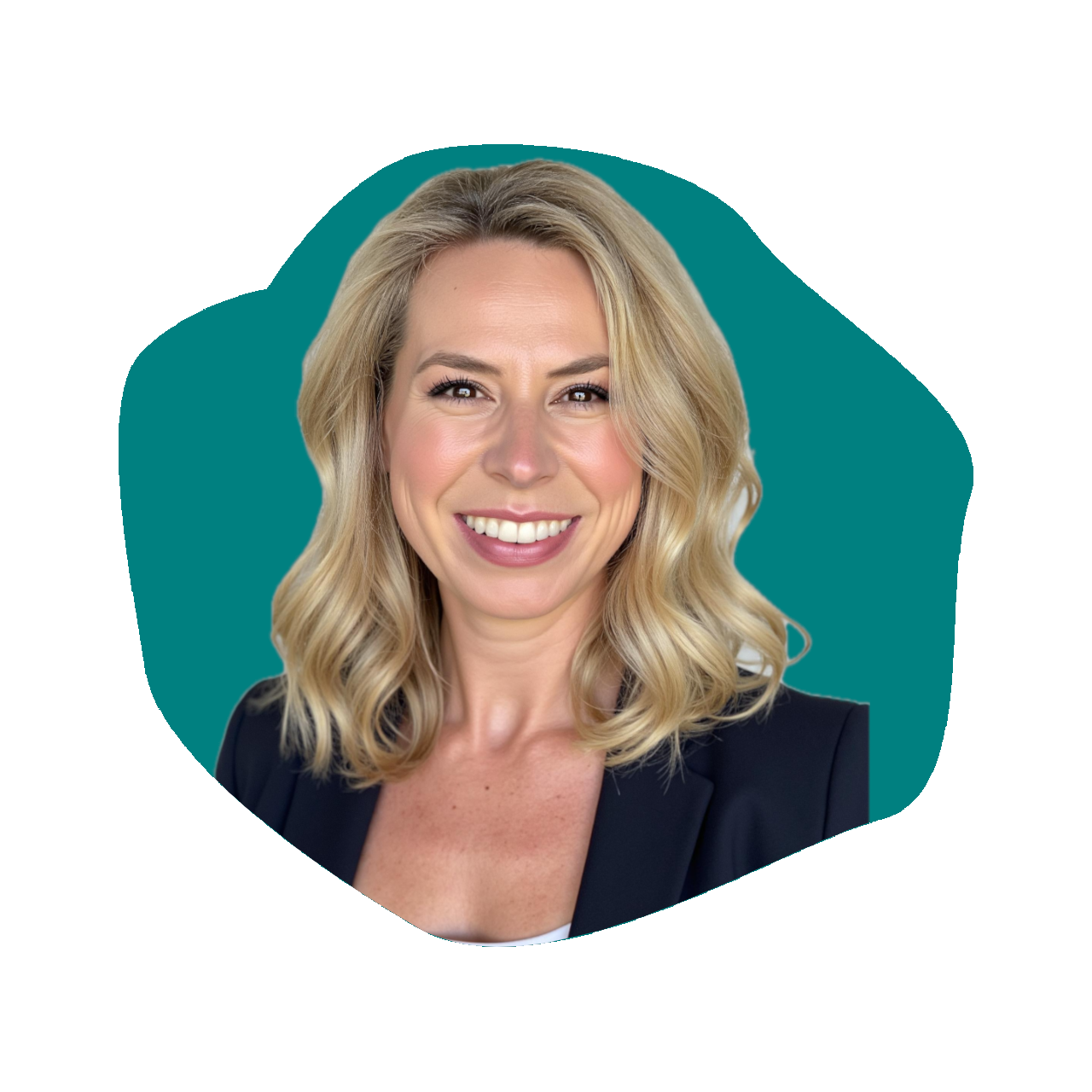
753
Katya Eckert: Founder & CEO of A DOMANI
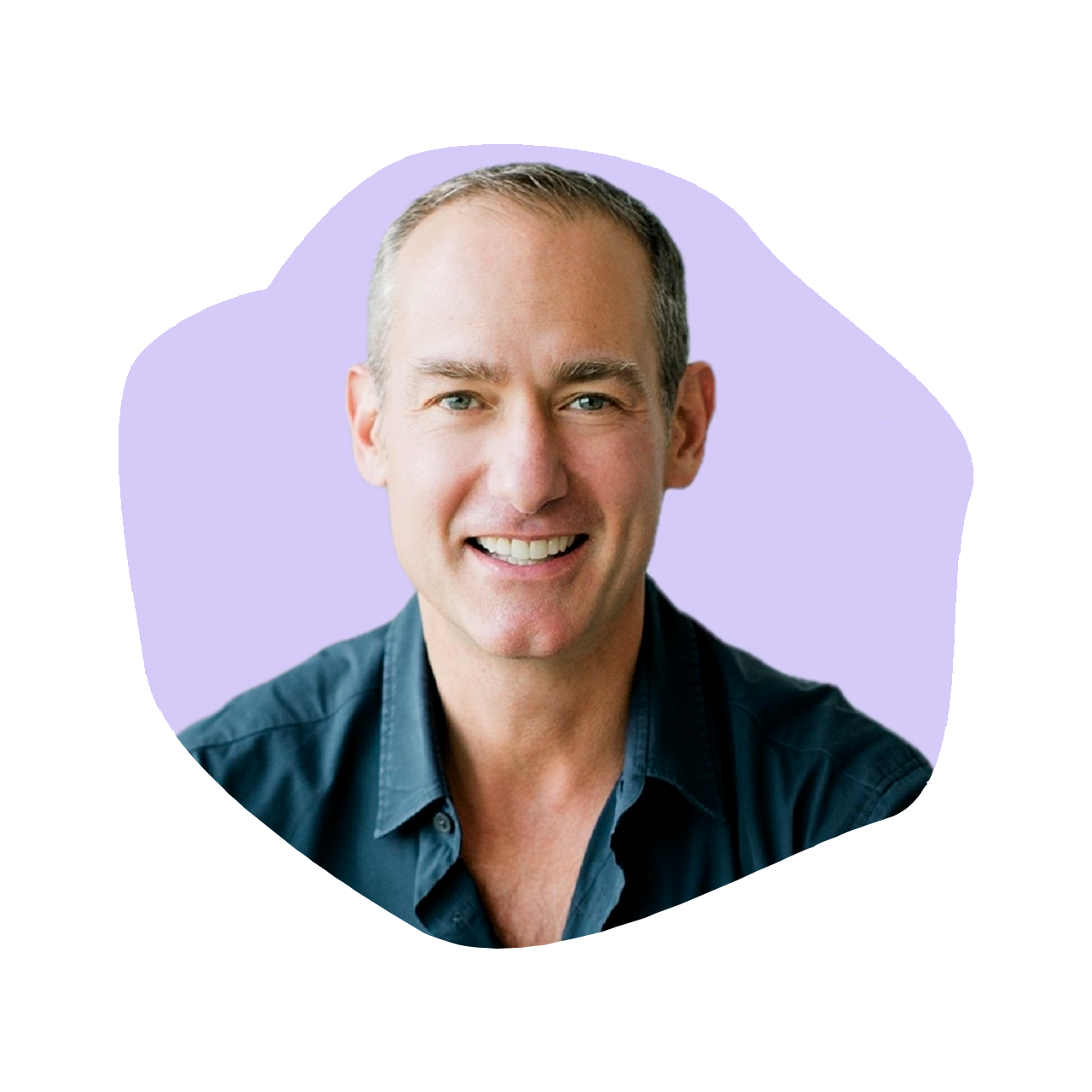
752
Mark Rampolla: Author of An Entrepreneur’s Guide to Freedom and Founder of ZICO
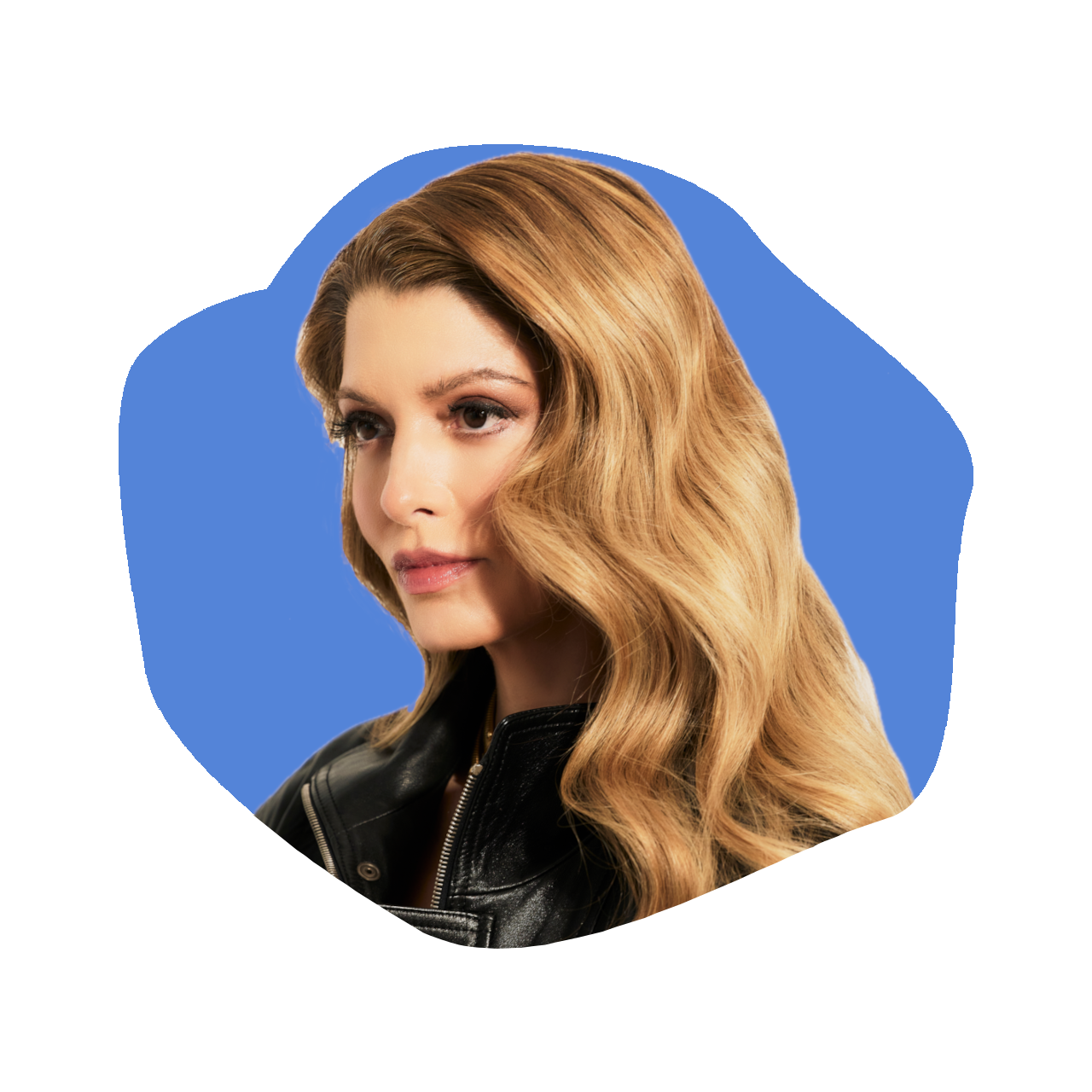
751
Deborah Pagani: Founder of Deborah Pagani Beauty

750
Angela Caglia: Founder & CEO of Angela Caglia Skincare
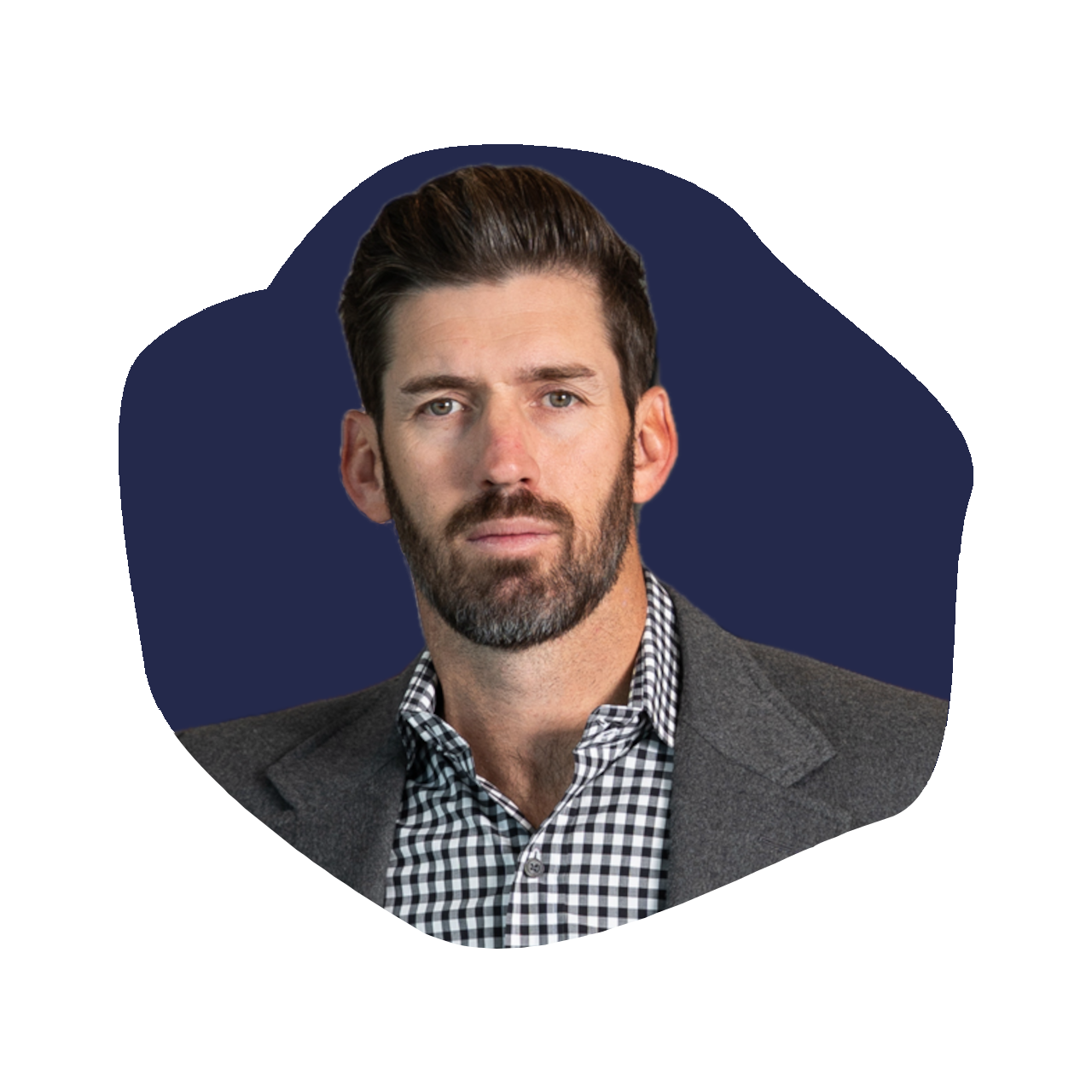
749
Doss Cunningham: Chairman & CEO of Nutrabolt




